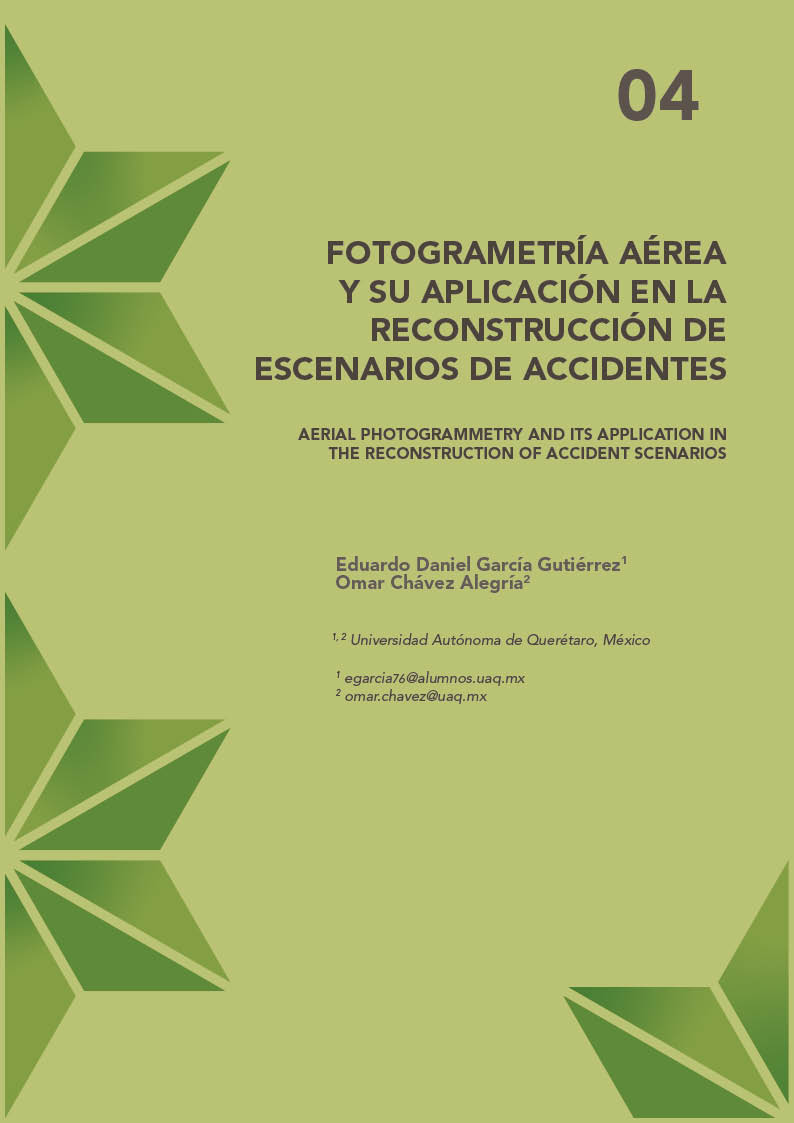Abstract
In this research work, the photogrammetric processing of images obtained from unmanned aerial vehicles is carried out with the purpose of recreating or reconstituting the scenarios of traffic accidents that occurred in the highway area. The particularity of this research is that aerial photogrammetry is obtained under different climatic conditions taking, as reference, ground control points marked with a geodetic equipment under a Global Positioning System (GPS for its acronym in English) that indicates the coordinates in which the captured images are fixed. In addition, with the resources obtained from digital photogrammetric processing, such as 3D models, orthophotos and / or point cloud, the identification, length and positioning of braking tracks in the scene of an accident are established to estimate the speed at which the vehicles were circulating, prior to the occurrence of the accident. The proposed methodology helps to survey the scene of an accident to be faster, more efficient and more precise than the methods currently used in the field by police forces.
The results suggested that, considering the number of traffic accident scenarios recreated with the methodology described in the previous paragraph, the average relative error in estimating the length of braking tracks and distances, in general, does not exceed five percent in relation to the distances obtained in the field on a dry asphalt pavement.
References
P. Collier, “Photogrammetry and Aerial Photography,” International Encyclopedia of Human Geography, vol. 10, pp. 91-98, 2020.
M. Daakir, M. Pierrot Deseilligny, P. Bosser, F. Pichard, C. Thom, Y. Rabot y O. Martin, “Lightweight UAV with on-board photogrammetry and single-frequency GPS positioning for metrology applications,” ISPRS Journal of Photogrammetry and Remote Sensing, vol. 127, pp. 115-126, Mayo 2017.
I. Stáňa, S. Tokař, K. Bucsuházy y M. Bilík, “Comparison of Utilization of Conventional and Advanced Methods for Traffic Accidents Scene Documentation in the Czech Republic,” Procedia Engineering, vol. 187, pp. 471-476, 2017.
L. Pádua, J. Sousa, J. Vanko, J. Hruška, T. Adão, E. Peres, A. Sousa y J. Sousa, «Digital Reconstitution of Road Traffic Accidents: A Flexible Methodology Relying on UAV Surveying and Complementary Strategies to Support Multiple Scenarios,» Environmental Research and Public Health, vol. 17, p. 1868, 2020.
P. Jin, S. Ardestani, Y. Wang y W. Hu, «Unmanned Aerial vehicle (UAV) Based Traffic Monitoring and Management,» Center for Advanced Infrastructure and Transportation (CAIT), University of New Jersey, New Jersey, 2016.
DJI, Disclaimer and safety guidelines. Phantom 4 series, Beijing: DJI, 2017.
R. Kamnik, M. Nekrep y D. Topolšek, «Using the scanners and drone for comparison of point cloud accuracy at traffic accident analysis,» Accident Analysis & Prevention, vol. 135, p. 105391, Febrero 2020.
J. Verbeke y J. De Schutter, «Experimental maneuverability and agility quantification for rotary unmanned aerial vehicle,» Transportation Research Part C: Emerging Technologies, vol. 10, nº 1, pp. 3-11, Marzo 2018.
Garmin, «GPSMAP 64 series / GPSMAP 64X series Manual de usuario,» Garmin Ltd, Olathe, 2020.
J. Borrel, Manual de Investigación y Reconstrucción de Accidentes de Tráfico, Primera ed., Valencia: Editorial Tirant lo Blanch, 2018, pp. 465-467.
SCT, «N-CSV-CAR-1-03-007/17. Determinación del coeficiente de fricción,» SCT, Ciudad de México , 2017.

This work is licensed under a Creative Commons Attribution-NonCommercial-ShareAlike 4.0 International License.
Copyright (c) 2023 Perspectivas de la Ciencia y la Tecnología

